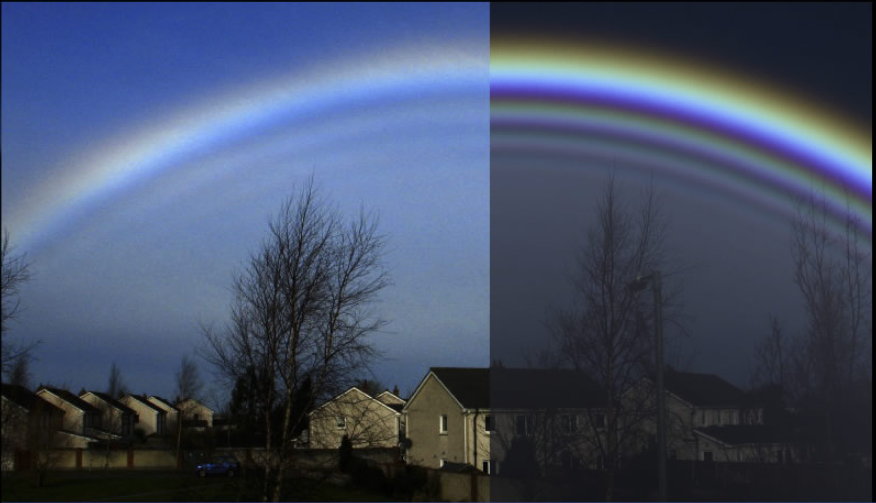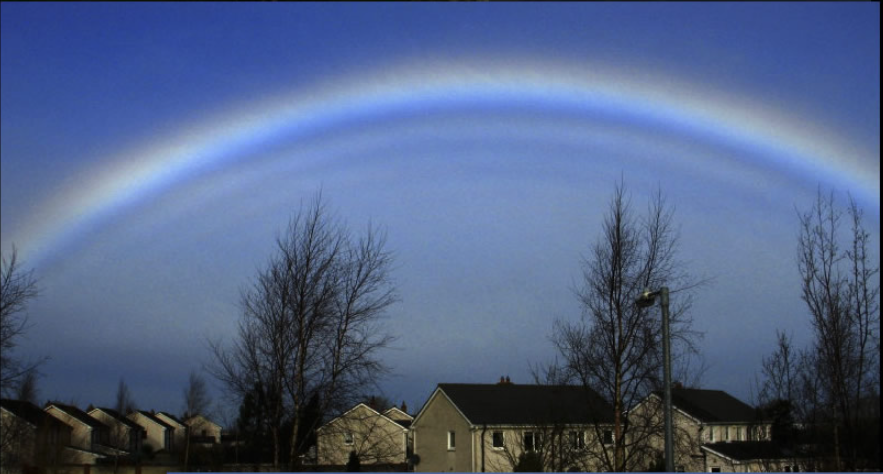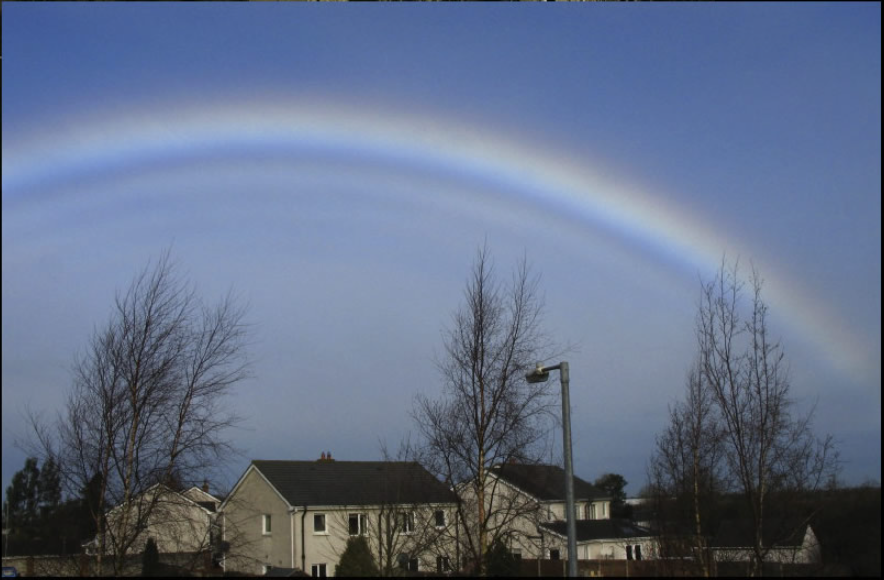Cloudbow
Cloudbow: Exploring the Enchanting Sky Scale Diffraction Patterns
Have you ever witnessed a cloudbow? These captivating atmospheric phenomena are the smaller droplet equivalent of rainbows, showcasing sky scale diffraction patterns. While rainbows typically form when sunlight interacts with raindrops, cloudbows occur when sunlight interacts with larger cloud or fog droplets. In this article, we will delve into the mesmerizing world of cloudbows, uncovering their formation, characteristics, and unique features.
The Intricate Formation of Cloudbows
Cloudbows are created through a process known as diffraction, which occurs when light waves encounter obstacles or particles that are comparable in size to the wavelength of the light. In the case of cloudbows, sunlight passes through large cloud or fog droplets, causing the light to diffract and produce a stunning display of colors. These droplets act as tiny prisms, bending and dispersing the sunlight into its constituent hues.
Unveiling the Spectral Splendor
Similar to rainbows, cloudbows exhibit a range of colors. However, their appearance differs slightly due to the larger size of the droplets involved. The colors in a cloudbow are typically less vibrant and may appear more pastel-like compared to rainbows. This subtle variation in color intensity adds to the ethereal beauty of cloudbows, evoking a sense of tranquility and wonder.
The Role of Droplet Size
The size of the droplets plays a crucial role in determining the characteristics of a cloudbow. Cloud and fog droplets typically range in size from 1 to 100 microns, with a mean diameter of 10-20 microns. However, cloudbows are formed by larger droplets, often around 150 microns (0.15mm) in diameter. These larger droplets contribute to the brilliance and distinctiveness of cloudbows, allowing for a more pronounced diffraction effect.
Supernumeraries: A Fascinating Phenomenon
One intriguing aspect of cloudbows is the presence of supernumerary bows. These are faint, additional bands of colors that appear on the inner side of the primary bow. Supernumeraries result from the interference of light waves as they pass through the droplets. By analyzing the spread in diameters of the droplets contributing to a cloudbow, scientists can estimate the range of droplet sizes present. Typically, this spread is around 10% (standard deviation for a Gaussian distribution), highlighting the diversity of droplet sizes within the cloud or fog.
Mystical Cloudbows Without Rain or Mist
In some extraordinary instances, cloudbows can materialize even in the absence of perceptible mist or rain. This phenomenon occurs when large droplets, possibly accompanied by virga (precipitation that evaporates before reaching the ground), are present in moisture-laden air. The result is a faint yet awe-inspiring cloudbow that seems to defy conventional expectations. Imagine a scene where the air feels damp, and the clouds exhibit a feathery texture, all while no rain falls from above. Such moments offer a glimpse into the captivating unpredictability of atmospheric optics.
Capturing the Magic of Cloudbows
Photographing cloudbows presents a unique challenge due to their subtle appearance and delicate colors. To capture the enchanting beauty of cloudbows, photographers often rely on techniques such as long exposures and careful manipulation of lighting conditions. These methods help to enhance the visibility of cloudbows, allowing us to marvel at their mesmerizing allure.
Conclusion
Cloudbows offer a mesmerizing glimpse into the intricate world of atmospheric optics. These ethereal sky scale diffraction patterns, formed by larger cloud and fog droplets, showcase a delicate interplay of light and water. With their pastel-like hues and the occasional presence of supernumeraries, cloudbows create an enchanting spectacle that captivates both scientists and observers alike. So, the next time you find yourself gazing at the sky on a misty or cloudy day, keep an eye out for the elusive cloudbow, and let its subtle beauty transport you to a realm where science and art converge.


Cloudbow/Fogbow Naas, Co. Kildare, Ireland imaged by Simon Holt. ©Simon Holt, shown with permission.
Cloudbows and fogbows are the small droplet analogue of rainbows. They are sky scale diffraction patterns.
Superimposed on the right hand side (Simon's complete image is below) is a droplet scattering calculation using Mie theory and IRIS.
The best fit water droplets were 150 micron (0.15mm) diameter. The inner supernumeraries allowed the spread in diameters to be estimated - this came out at 10% (standard deviation for a Gaussian distribution).
Thus the drops making this splendid bow were large! Cloud and fog droplets range usually in size from 1 - 100 micron but the mean is usually 10-20 micron.
Sometimes large droplets, possibly also virga, in moisture laden air produce a faint cloudbow without any perceptible mist or rain. This one is a spectacular example. "There was no rain, though the air was damp and the clouds had a feathery texture to them."








Note: this article has been automatically converted from the old site and may not appear as intended. You can find the original article here.
Reference Atmospheric Optics
If you use any of the definitions, information, or data presented on Atmospheric Optics, please copy the link or reference below to properly credit us as the reference source. Thank you!
-
<a href="https://atoptics.co.uk/blog/cloudbow-2/">Cloudbow</a>
-
"Cloudbow". Atmospheric Optics. Accessed on December 25, 2024. https://atoptics.co.uk/blog/cloudbow-2/.
-
"Cloudbow". Atmospheric Optics, https://atoptics.co.uk/blog/cloudbow-2/. Accessed 25 December, 2024
-
Cloudbow. Atmospheric Optics. Retrieved from https://atoptics.co.uk/blog/cloudbow-2/.